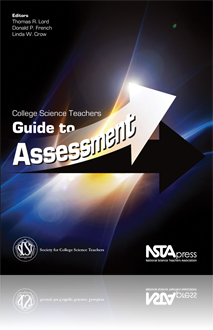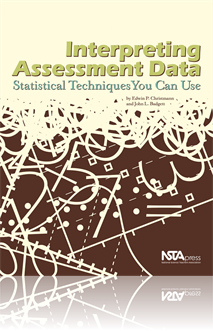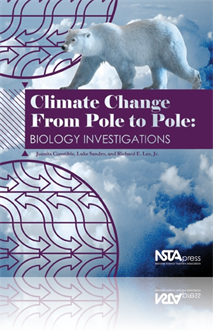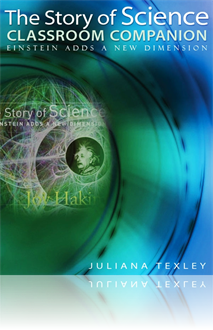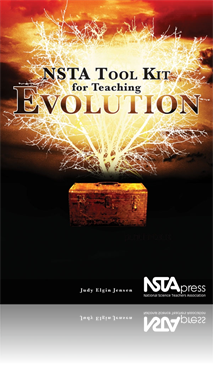All Book Chapters
Book Chapter
Alternative Forms of Assessment for The College Science Laboratory
A basic definition of alternative assessment is any type of evaluation that does not use traditional forms of paper-and-pencil testing. Too often new forms of teaching and learning are coupled with traditional forms of student assessment rather than ...
Book Chapter
Survey Instrument Validation: The First Commandment of Educational Research
Survey instrument validation may be the most difficult task for a scientist starting to conduct educational research. A survey that is preceived to be inadequately validated will generally be rejected for publication, but there is little guidance on ...
Book Chapter
The past two decades have witnessed a dramatic shift in how science is taught. Electronic portfolios—hereafter referred to as e-portfolios—represent one possible way to bring assessment into alignment with technology-based instruction. In this ch...
Book Chapter
The integration of math, science, and technology (MST) into robust inquiry-based learning opportunities is a tall order for any educator. However, it is critical to do so throughout the learning process. This chapter addresses some of the deficiencie...
Book Chapter
Gauging the Nature of Science (NOS): An Alternate Form of Assessment
Science teachers of all disciplines can use students' NOS (nature of science) scores as an alternate form of assessment. In addition to traditional forms of assessment like exams and quizzes, NOS levels can truly indicate students' understanding of s...
Book Chapter
In recent years, the value of using authentic assessments to evaluate student learning has been discussed at all levels. The use of authentic assessments, in the use of lesson plans, has proven to be a valuable tool for the evaluation of content mast...
Book Chapter
Formative Assessment With Student Remotes and E-mail
This chapter features two formative assessment techniques that were implemented in several sections of the first semester of an introductory physics class at East Stroudsburg University. The performance of these students was compared to sections in w...
Book Chapter
Peer Assessment: Value, Fears, Headaches, and Success
The idea of peer assessment sounds fantastic and literature shows that it is invaluable. Yet, when most faculty first try peer assessment they are faced with a different reality. This chapter focuses on the obstacles of peer assessment with the first...
Book Chapter
Working With Student Engagement
"Classroom assessment informs teachers how effectively they are teaching and students how effectively they are learning" (Cross 1996). For this purpose, in this chapter the author constructed an assessment tool known as the Diagnostic Learning Log (D...
Book Chapter
Promoting Student Reflection on Exams
One of the greatest challenges in assessing student performance is providing students with the detailed and appropriate feedback they need to learn from their mistakes. Summative assessments, in the form of exams, are used to determine what students ...
Book Chapter
Hypothesis Modification Activity
Many upper-level undergraduate science courses are content and data laden, leaving little room for students to practice important skills such as generating hypothesis and designing experiments. This chapter introduces The Hypothesis Modification Acti...
Book Chapter
Exam Corrections and Analysis, Student Perspective
One of the most difficult parts of being a teacher is giving exams back to students when you know, and students know, that they did not perform well. Students also perceive instructors as being tricky or unfair on exams. To help combat this perceptio...
Book Chapter
Exam Analysis, Instructor Perspective
In this chapter, the author addresses what she thinks is the most difficult job of an instructor—effectively assessing what students have learned. Most instructors can articulate what they want students to know at the end of a unit or class, but de...
Book Chapter
Inquiry-Based Labs: The Scientific Report
In this chapter, the author teaches a General Biology I course with five inquiry-based laboratories. Although it is an introductory biology course for both majors and nonmajors, students are very engaged in the scientific process. A Scientific Report...
Book Chapter
In every science course the author teaches, students choose and read a book available in the campus library and submit a review at the end of the course. The student's review outlines the appropriateness of this book for someone taking the course in ...
Book Chapter
In the author's Biology 350 (genetics) course, the students assemble and demonstrate models to teach concepts related to course content topics. Each student chooses one article from a selection of published papers that describes teaching models for d...
Book Chapter
Eleven Assessment Lessons Learned at the Gate
As a "gateway" instructor for more than 30 years, the author learned a few things about assessing the "typical" community college student. "Gateway" is the polite euphemism for suggesting you will always be teaching the nonscience majors with the hop...
Book Chapter
Developing Assessment Performance Indicators
The goal of assessment is to judge how well a student has learned. This information has a range of uses but is mainly used to improve student learning or for the accreditation of student performance. This chapter is the first attempt to develop a val...
Book Chapter
Practices That Jeopardize Bona Fide Student Assessment
Student assessment is the means by which teachers—the directors of the learning experience—appraise the success of their lessons on students—the product of the instruction. Teachers at every level of instruction realize the importance of fair, ...
Book Chapter
Varied Assessment: A Brief Introduction
Although often seen as a means for evaluation, assessment is first and foremost an instructional tool. Use of multiple assessment strategies can provide students with diverse feedback, allowing them to view the subject and their understanding of it f...
Book Chapter
Assessments That Assist in Motivating Students
Assessments are one of the few ways students can be reached individually. You can directly interact with each student. If used in thoughtful ways, assessments can motivate students to engage in class and to study on their own. In this chapter, the au...
Book Chapter
Means of Linking Research to Practice in Organizing a Course on Student Assessment
Accurate assessment of student achievement is an important requirement of educators. The author, in his role as professor in Science Education at the University of Calgary, taught an assessment course for master's students and student teachers. The ...
Book Chapter
Writing/Using Multiple-Choice Questions to Assess Higher-Order Thinking
Most graduate entrance exams (including the GRE, MCAT, and DAT) are based on multiple-choice questions. Many later exams, such as the medical board exams, are also multiple choice. Therefore, it is important to make sure that students are prepared fo...
Book Chapter
Tips on Classroom Assessment: How to Teach Our Students to Take Multiple-Choice Exams
Multiple-choice exams are one of the few assessment strategies available for large-lecture sections of students. The author teaches students who are recently out of high school and realizes that they need to be "taught" certain skills for taking mult...
Book Chapter
Better Multiple-Choice Assessments
Multiple-choice questions have an important place in the assessment of student learning and constructed correctly, can provide instructors and students alike with valuable insight to student learning. This chapter is devoted to helping readers get th...
Book Chapter
Assessment of Students' Learning Through the Creation of Scientific Posters
Assessment of student knowledge takes many forms. This chapter features the presentation of scientific posters—one assessment used successfully in upper-division biology courses. The posters, on topics chosen by the students in consultation with co...
Book Chapter
How Assessment and Testing Developed
The United States has approximately 55 million students in grades K–12. On average, teachers administer 100 teacher-generated tests per school year, which translates into America’s students taking approximately 550 million—that’s 550,000,000�...
Book Chapter
An old saying goes, “The only constant is change.” No truer words have ever been spoken, especially in a time of reform. As a matter of fact, reform is change. This chapter examines change from two perspectives. The first perspective examines the...
Book Chapter
The Role of Curriculum Materials in Reform
Distinguishing between standards-based curriculum materials and others requires considerable expertise in science content and pedagogy. Research suggests that even experienced teachers may not recognize how standards-based instruction can be embodied...
Book Chapter
Learning From Innovative Instructional Materials and Making Them Your Own
This chapter examines the interplay between the intended implementation of designed, innovative instructional materials and the enacted curriculum by teachers who are accustomed to customizing their own instruction. When the Education Development Cen...
Book Chapter
Building Leadership Teams to Create Professional Learning Communities in Secondary Schools
This chapter proposes one way to foster teamwork and develop a professional learning community at the secondary level by describing the development of a leadership team focused on improving science teaching and learning. Forming a leadership team is ...
Book Chapter
Essential Partnerships in the Reform of Secondary Science
Alice’s travel through Wonderland resembles our journeys with reform. We often encounter new experiences. We learn from events. Some tasks are harder to complete than they initially appear. Moreover, we tend to encounter the same lively characters ...
Book Chapter
Using Data to Reform Science Instruction
This chapter will introduce you to skills and strategies used to examine classroom assessment data to improve science instruction. Although the authors advocate using multiple forms of student work to inform instruction, they will focus on using stud...
Book Chapter
Appropriate Practice for Linguistically Diverse Science Learners
The population of the United States continues to become increasingly diverse, both culturally and linguistically. In less than two decades, one half of the students in the United States will be non-white and Latino, with one quarter of the total stud...
Book Chapter
One Teacher’s Journey Toward Reformed Teaching
Reform requires us to rethink our teaching, to view teaching through different eyes. Such change requires professional development experiences that are long term and sustained. The experiences must challenge teachers to consider new ways of thinking ...
Book Chapter
Now You “Sea” Ice, Now You Don’t
Increasing air temperatures in the last 50 years have dramatically altered the Antarctic Peninsula ecosystem. In this interdisciplinary inquiry, learners use a cooperative approach to investigate changes in the living and nonliving resources of the...
Book Chapter
The Fission Vision: Teacher and Student Editions
Although they may have heard the term many times, students often have difficulty conceptualizing the process of nuclear fission. The kinesthetic simulation, as well as the two suggested applets, are worthwhile activities for clarifying the process o...
Book Chapter
To help elevate your level of active instruction, this chapter provides a sampling of the kinds of hands-on activities that promote understanding of evolutionary processes. These particular activities are structured according to the BSCS 5E Instructi...
Book Chapter
Scales and Number Distributions
Statistics is a branch of science that deals with the collection, analysis, interpretation, and presentation of numerical data. We use statistics every day to solve problems. Geneticist Gregor Mendel, for example, experimented with pea plants, which ...
Book Chapter
Central Tendency and Variability
This chapter presents two important interrelated topics in statistics: central tendency and variability. Measures of central tendency show how similar the data points in a set of data are, while measures of variability show how much the data points v...



